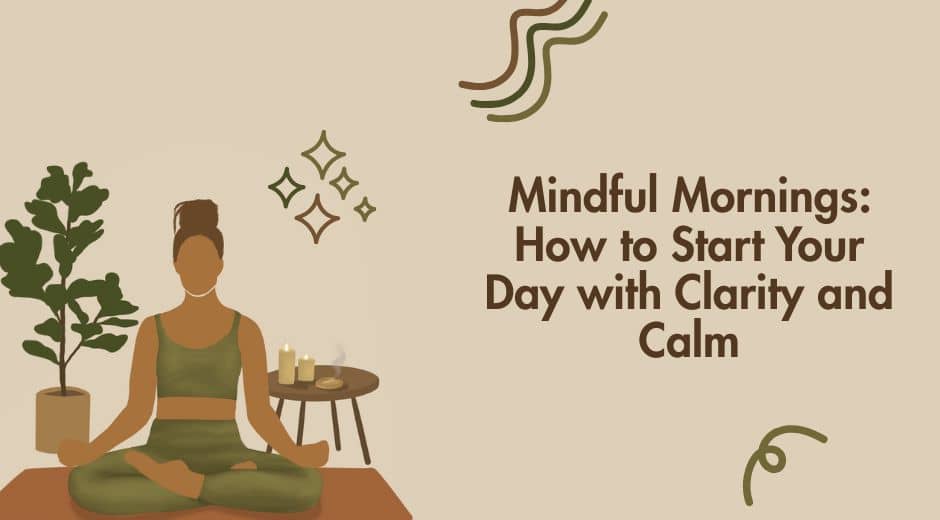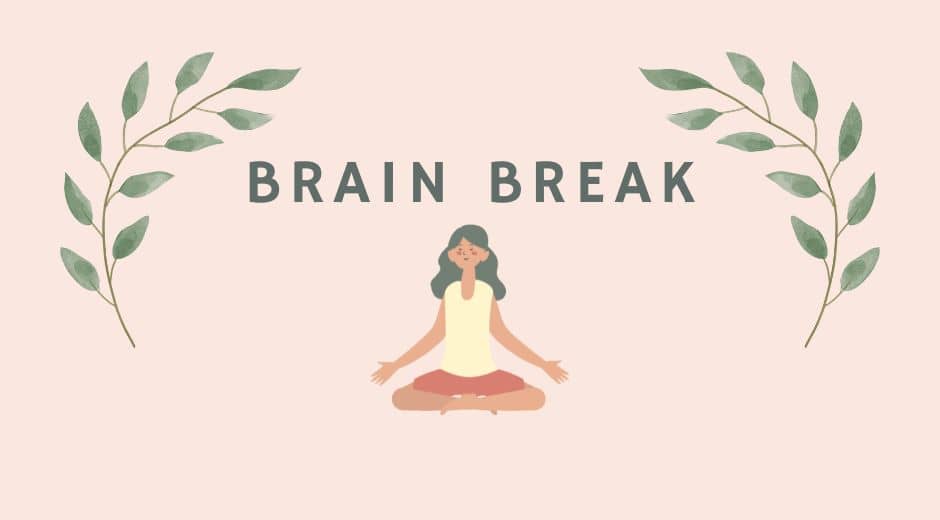The Power of Grounding: Returning to Inner Stability in a Distracted World
Life moves quickly. Our minds process constant information, our emotions shift rapidly, and our bodies rarely get the pause they deserve. In this environment, grounding has become an essential practice for emotional and mental wellbeing. It helps redirect awareness from overwhelming thoughts back to the body and the present moment. Through grounding, people experience clarity, calmness, and a steady sense of self that daily challenges cannot easily disrupt.
Grounding is simple but powerful. It requires no special tools, no long routines, and no complicated instructions. It only asks you to be present with your body and senses. For anyone dealing with anxiety, stress, distraction, or emotional overload, grounding provides a reliable way to reconnect with stability.
What Grounding Really Means
Grounding is the practice of anchoring your attention in the physical world instead of letting thoughts carry you away. When emotions rise or stress intensifies, grounding brings awareness back to something steady. This can be breath, sensation, touch, or sound.
This shift lowers the intensity of emotional reactions and reduces mental noise. According to several studies highlighted by Healthline, grounding activates the parasympathetic nervous system, which encourages calmness, balance, and clarity.
Through grounding, you remind your mind that the present moment is safe, real, and manageable.
Why Grounding Matters Today
People today face more stress triggers than ever before. Screens, messages, deadlines, responsibilities, and emotional expectations create constant pressure. Grounding works like a reset button. It slows the overload, interrupts spiraling thoughts, and helps you return to a centered state.
Grounding matters today because it:
Reduces anxiety
Softens emotional intensity
Restores focus
Improves decision making
Balances the nervous system
Enhances self awareness
In a world that rarely pauses, grounding creates space to breathe, think, and feel intentionally.
The Science Behind Grounding Practices
Grounding affects the brain, the nervous system, and the body. When practiced consistently, grounding helps reduce stress hormones, improve heart rate variability, and restore cognitive clarity.
Here is what scientifically occurs during grounding:
Breathing deepens
Heart rate slows
Muscles release tension
The mind exits survival mode
Emotional reactions settle
Awareness becomes more stable
This is why grounding is used in mental health therapy, wellness coaching, and mindfulness training. It creates a direct pathway to calmness.
Types of Grounding Techniques
Grounding techniques fall into three main categories, each helpful in different situations.
1. Physical grounding
This form uses the body to anchor awareness.
Examples:
Standing firmly and noticing the weight of your feet
Touching something with texture, like a stone or fabric
Placing your hand on your chest
Stretching slowly
Physical grounding reconnects you to your physical presence.
2. Sensory grounding
This approach uses the five senses.
Examples:
Naming sounds around you
Noticing colors in your environment
Feeling the temperature of your clothing
Smelling something comforting
Sensory grounding strengthens presence and reduces mental noise.
3. Mental grounding
This method involves thought based anchors.
Examples:
Counting breaths
Naming objects in the room
Repeating calming phrases
Describing your surroundings
Mental grounding redirects attention away from overwhelming thoughts.
Together, these three techniques create a complete grounding system.
Grounding and Emotional Regulation
Grounding is one of the most effective tools for emotional regulation. When emotions become intense, the mind often loses clarity. Grounding interrupts that rush and anchors you in awareness.
Benefits include:
More space between emotion and reaction
Better emotional understanding
Less impulsive behavior
Greater resilience during stress
More confidence in handling triggers
Through grounding, you learn to stay present even during emotional storms.
Grounding for Anxiety Relief
Anxiety pulls awareness into the future. Grounding returns it to the present. This shift reduces worry, fear, and physical symptoms.
Helpful grounding practices for anxiety include:
Placing both feet on the floor and breathing deeply
Naming five things you see
Feeling the sensation of your hands
Counting backward slowly
Placing attention on your heartbeat
Grounding creates a stable moment where anxious thoughts lose intensity.
Movement as a Grounding Tool
Grounding does not need to be still. Movement grounding is excellent for people who struggle to meditate or sit quietly.
Examples include:
Slow walking
Gentle stretching
Yoga
Rotating shoulders
Observing breath while moving
Movement helps release trapped tension and restore a sense of flow. It balances the body and brings the mind back into calm presence.
Nature Based Grounding
Nature is one of the best grounding environments available. The natural world regulates energy, calms emotions, and restores mental clarity.
Ways to practice grounding in nature:
Walking barefoot on grass
Holding a stone or leaf
Sitting near water
Feeling sunlight or wind
Listening to natural sounds
Nature grounding improves mood and reduces stress rapidly. Research referenced by Healthline shows that natural grounding may even support sleep quality and help reduce inflammation.
Building a Daily Grounding Routine
A grounding routine does not need to be long. The key is consistency.
Example routine:
Morning: Place your hand on your chest and breathe deeply for two minutes.
Midday: Step outside for a short sensory break, noticing shapes, colors, and sounds.
Evening: Do a slow body scan from head to toe before sleep.
Small habits create significant results. Grounding becomes easier and more natural with repetition.
Grounding and Self Connection
The more grounded you are, the more connected you become to yourself. Grounding strengthens inner awareness, helps you understand your needs, and supports healthier choices.
Benefits of this inner connection include:
Clarity in communication
Stronger intuition
Better boundaries
More aligned decisions
Higher self respect
Grounding creates a stable foundation for personal growth.
Grounding and Focus
Grounding also enhances focus. When your mind is scattered, grounding pulls attention back into alignment.
This helps with:
Work productivity
Learning new skills
Staying attentive in conversations
Making thoughtful decisions
Grounding is one of the simplest ways to sharpen concentration.
Conclusion: Grounding Returns You to Yourself
Grounding offers balance in a world full of distraction. It restores peace, connects you with your body, and strengthens your emotional resilience. With grounding, you gain clarity, calmness, and confidence.
To explore more mindfulness practices and wellness techniques, visit BodyWellnessGroup.com.
For further scientific insight into grounding and stress response, explore Healthline.
If you are ready to practice grounding today, begin here: Moviefil
Grounding is where presence begins. It brings you home to your mind, your body, and your inner stability.
Wellness Made Simple

Breathwork Basics You Can Use Anytime To Reset
Breathwork Basics You Can Use Anytime To Reset

Sleep Rhythm, Simple Night Habits For Deeper Rest
Sleep Rhythm, Simple Night Habits For Deeper Rest

The Meaning of Connection: Building a Purposeful and Fulfilling Lifestyle
Explore how genuine connection supports mental wellbeing, emotional health, and deeper purpose, shaping a more meaningful and fulfilling lifestyle.

Hydration Balance: How Water Shapes Energy, Digestion, and Daily Wellness
Learn how hydration balance fuels energy, supports digestion, and improves overall wellbeing through simple daily habits and smart nutrition strategies.

The Power of Grounding: Returning to Inner Stability in a Distracted World
Discover how grounding techniques calm the mind, reduce stress, and restore emotional stability in a fast paced, distraction filled world.

Mastering Mobility: The Overlooked Pillar of Long-Term Fitness Health
Discover why mobility is essential for strength, performance, and injury prevention, and learn how daily movement habits build a healthier, more resilient body.

The Meaning of Connection: Building a Purposeful and Fulfilling Lifestyle
Explore how genuine connection supports mental wellbeing, emotional health, and deeper purpose, shaping a more meaningful and fulfilling lifestyle.

The Power of Antioxidants: Defending Your Body from Within
Learn how antioxidants protect your cells, strengthen immunity, and support long-lasting vitality through simple, nutritious food choices.

Expanding Awareness: The Key to Emotional and Mental Freedom
Discover how cultivating awareness deepens emotional balance, clarity, and self-understanding, helping you live consciously every day.

The Power of Recovery: How Rest Shapes Long-Term Fitness Success
Discover why recovery is essential to performance, strength, and endurance, and learn how rest builds a foundation for sustainable fitness progress.













